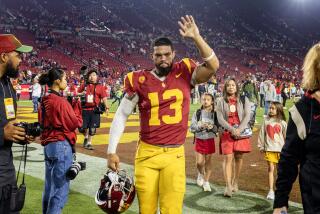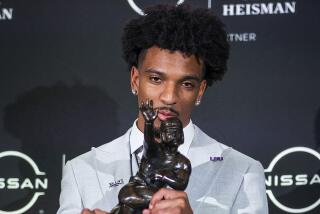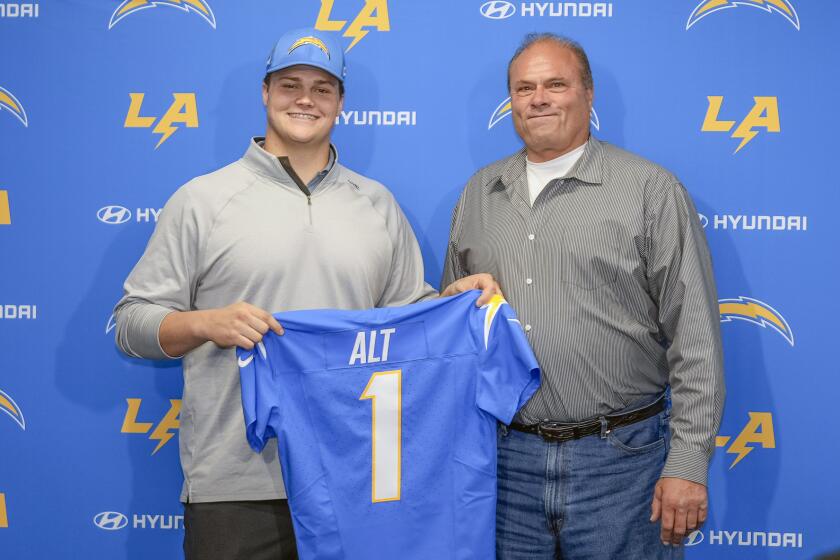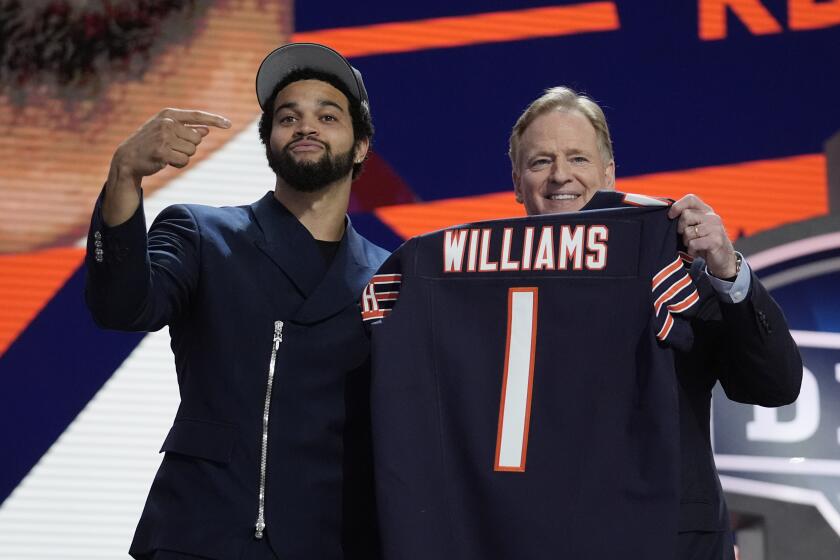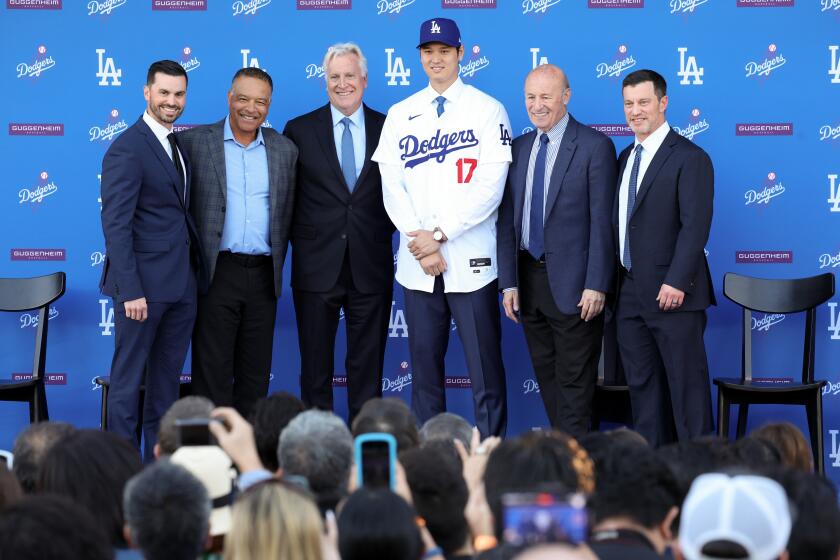Heisman Trophy is a poor predictor of future football success
The moment that Robert Griffin III stepped to the podium Saturday night to receive the Heisman Trophy, greeted by a contingent of past winners, the Baylor quarterback automatically became eligible for membership in another sort of club.
Not that he wants to join it. No player does.
It is the society of Heisman flops.
Scroll down the long and prominent list — Pat Sullivan, Jason White, Eric Crouch, et al. — of men who stood on college football’s highest pedestal only to crash and burn as pros.
“The Heisman Trophy isn’t given to the player who has the best future in the NFL,” said Brian Billick, the former Baltimore Ravens coach who now works as an analyst for Fox Sports and NFL Network.
“The Heisman is for college,” he said. “And it’s a tough transition.”
Not every winner struggles. The likes of Paul Hornung, Roger Staubach and Tony Dorsett enjoyed stellar pro careers. More recently, they were joined by Marcus Allen, Tim Brown and Barry Sanders.
And a lack of NFL success does nothing to diminish a player’s extraordinary college achievements.
But the expectations are lofty for Heisman winners. Over the last 30 years, no fewer than two-thirds of them have fallen short at the next level, winding up as mediocre or worse.
“I don’t think the Heisman should have any bearing on draft selection,” said John Robinson, the former USC and Rams coach. “Some of these guys struggle.”
Robinson and others close to the game see a variety of reasons for high-profile washouts, starting with the fact that the award does not always go to the best player.
In 2000, Chris Weinke of Florida State took home the trophy. Drew Brees finished third in the balloting, LaDainian Tomlinson fourth and Michael Vick sixth.
“Sometimes we vote on career achievement,” said Charles Davis, an NFL Network analyst who casts a ballot each fall. “Sometimes we vote for the quarterback on the best team.”
Speaking of quarterbacks, they have won the award more often than players at any other position in recent years — and they seem to have the most trouble living up to it.
Since 1980, more than half of the 11 Heisman-winning running backs have become stars in the pros. Brown, at wide receiver, and Charles Woodson, at defensive back, also excelled.
Among 16 quarterbacks, only Carson Palmer can claim to have reached that status, with the jury still out on Cam Newton, Sam Bradford and Tim Tebow. Vinny Testaverde and Doug Flutie were solid if unspectacular. Plenty of others were duds.
However, Billick points out that a similar ratio applies to all quarterbacks trying to jump from college to the NFL.
In 1990, Heisman winner Andre Ware was selected by the Detroit Lions with the seventh pick in the draft — and went nowhere. The same can be said for later picks such as Tommy Hodson and Peter Tom Willis. Even Jeff George, the No. 1 selection, had a rocky career.
Only Neil O’Donnell, taken at No. 70, established a solid track record in the pros.
“If a running back has the right size, speed and strength, he’s going to be great,” Billick said. “For quarterbacks, what is the list of attributes?”
Is it a quick release like Dan Marino’s? The throwing motion of a Warren Moon? The field awareness of a Joe Montana?
“Obviously, when you focus on the quarterback position, the evaluation process is flawed at best,” Billick said. “It’s a 50-50 crapshoot.”
Further complicating the situation, college teams often favor quarterbacks who run as often as they pass. NFL scouts say that 80% of the playbook for this kind of offense has no bearing on what the pros do.
Take Crouch, for example. He was a dual-threat quarterback at Nebraska who never played in the NFL.
“You didn’t have any trouble with him winning the Heisman Trophy,” Davis said. “But you never once thought he was going to be a pro quarterback.”
No matter which position a Heisman Trophy winner plays, he usually faces one more significant obstacle on the road to making it as a pro: Often, he will be drafted by a lousy team.
“So much of it is where the guy goes,” Robinson said. “Does he wind up with a franchise that has a system in place, where he can flourish with consistent coaching?”
The Heisman runner-up this year, quarterback Andrew Luck, plays in a pro-style system at Stanford — making pro-style reads at the line of scrimmage — which should make the transition easier.
But for Griffin, landing in the right situation could be vital. Dual-threat quarterbacks need time and coaching to learn the pro game’s nuances, Robinson said.
Griffin was all smiles when he accepted the Heisman Trophy on Saturday night, happy to be standing among a newfound brotherhood.
“To be a part of these guys behind me, to be a part of greatness, you can’t ask for anything more,” he said.
Well, maybe you can. How about a long and productive NFL career?
twitter.com/latimeswharton
More to Read
Get our high school sports newsletter
Prep Rally is devoted to the SoCal high school sports experience, bringing you scores, stories and a behind-the-scenes look at what makes prep sports so popular.
You may occasionally receive promotional content from the Los Angeles Times.
